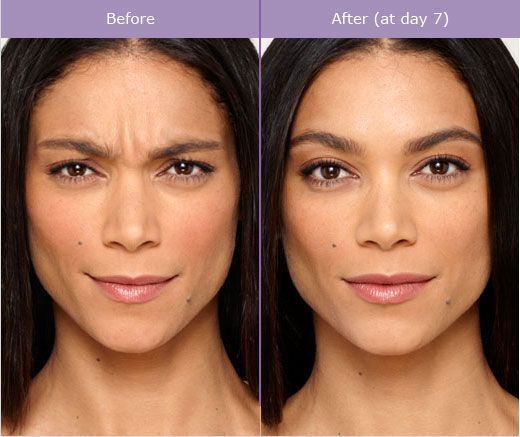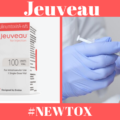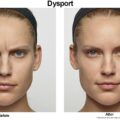Botox injections are noted primarily for the ability to reduce the appearance of facial wrinkles. They’re also used to treat conditions such as neck spasms (cervical dystonia), excessive sweating (hyperhidrosis), an overactive bladder and lazy eye. Botox injections may also help prevent chronic migraines.
Botox injections use a toxin called onobotulinumtoxinA to temporarily prevent a muscle from moving. This toxin is produced by the microbe that causes botulism, a type of food poisoning. Botox was the first drug to use botulinum toxin. Other products now include abobotulinumtoxinA (Dysport), rimabotulinumtoxinB (Myobloc) and incobotulinumtoxinA (Xeomin). Each is a little different, particularly when it comes to dosage units, so they aren’t interchangeable.
Does Botox Prevent Wrinkles?
Absolutely. Botox (and competitors like Dysport, Xeomin and Jeuveau) are highly purified toxins that can temporarily erase or reduce horizontal forehead lines, vertical frown lines, and crow’s-feet. “The injections slow muscles that contract hundreds of times a day, eventually etching lines in the skin,” says New York City board-certified plastic surgeon Michael Kane, author of The Botox Book.
Basically, wherever Botox is injected in the body, it paralyzes the muscles underneath the skin. “Botox interferes with the nerve stimulation of the muscle causing excess facial expressions,” Lancer explains. “When the muscle relaxes, the line diminishes.”
In addition to relaxing frown lines in between the eyebrows, Botox can also lift the corners of the mouth that sag with age, smooth out the “pincushion” look in some chins, soften smoker’s lines around the mouth, and soften vertical neck cords.
How Does Botox Work?
Botox blocks signals from the nerves to the muscles. The injected muscle can’t contract. That makes wrinkles relax and soften. Botox is most often used on forehead lines, crow’s feet (lines around the eye), and frown lines. Botox won’t help with wrinkles caused by sun damage or gravity.
How Is a Botox Procedure Done?
Getting Botox takes only a few minutes. You won’t need anesthesia. The provider uses a small needle to inject Botox into specific muscles with only minor discomfort.
It generally takes 7 to 14 days to take full effect. It’s best to avoid alcohol starting at least 1 week before the procedure. You should also stop taking aspirin and anti-inflammatory medications 2 weeks before treatment to help prevent bruising.
Avoid rubbing the injection site for 24 hours so you don’t spread the Botox to another area. Your doctor may also tell you to stay upright for 4 hours after the shots and to take a day off from exercising.
How Long Does a Botox Shot Last?
The effects from Botox will last 3 to 6 months. As muscle action slowly returns, the lines and wrinkles begin to reappear and need to be treated again. The lines and wrinkles often appear less severe with time because the muscles are shrinking. SEE: How Long Does Jeuveau Last?
Safety
Although botulinum toxin is life-threatening, small doses — such as those used in the application of Botox — are considered safe. In fact, only 36 cases of adverse effects associated with cosmetic use were reported to the U. S. Food and Drug Administration (FDA) between 1989 and 2003. Thirteen of these cases may have had more to do with an underlying condition than with the drug itself.
With that in mind, some researchers speculate that cosmetic applications may carry less risk than therapeutic Botox injections, as the doses are usually much smaller.
One 2005 study found that adverse effects were more likely to be reported with therapeutic use. This may be related to the underlying condition, or it may be because higher doses are needed to treat the condition.
Still, the overall risk is minimal, and Botox is considered safe overall.
You should always go to a board-certified dermatologist or plastic surgeon for Botox injections. You’re more likely to experience adverse side effects if your injections aren’t prepared according to FDA standards or injected by an inexperienced doctor.
What are the side effects to watch for?
Although Botox injections are relatively safe, minor side effects are possible. These include:
- pain, swelling, or bruising at the injection site
- headache
- fever
- chills
Some side effects are tied to the area of injection. For example, if you receive injections in the eye area, you may experience:
- drooping eyelids
- uneven eyebrows
- dry eyes
- excessive tearing
Injections around the mouth may result in a “crooked” smile or drooling.Most side effects are usually temporary and should fade within a few days.
However, drooping eyelids, drooling, and asymmetry are all caused by the unintentional effects of the toxin on muscles surrounding the target areas of the drug, and these side effects may take several weeks to improve as the toxin wears off.
In rare cases, you may develop botulism-like symptoms. Seek immediate medical attention if you begin experiencing:
- difficulty speaking
- difficulty swallowing
- difficulty breathing
- vision problems
- loss of bladder control
- general weakness





